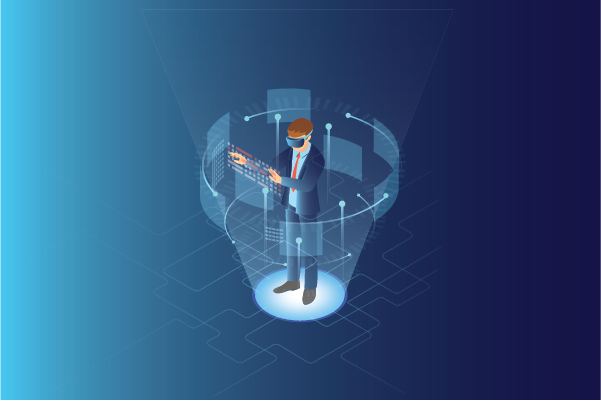Personalization is so dead as a technology! We’ve been talking about it for more than a decade now; but we still see brands struggling with it.
The reason why it went off course was because enterprises couldn’t leverage data effectively - the main source behind driving personalization.
Only very few companies (especially big tech) got it right. That’s why we see Amazon, Target doing bringing personalized offers which are almost right at that point, while the banks and insurance companies struggle to suggest the right offer.
The struggle lies in understanding the data and how to use it. Too often, many of us have experienced how personalization can go awry. This is either because the data is outright wrong, or it’s incomplete, or it’s fragmented and cannot provide sufficient context.
In the recent “State of the Connected Consumer” survey, Salesforce revealed 62% of customers say experiences with one industry influence their expectations of others, and 88% expect companies to accelerate digital initiatives due to the pandemic.
PWC states in a report that 1 in 3 customers will leave a brand they love after one bad experience. That means that if every touchpoint, every experience is not relevant enough, churn is waiting in the corner.
Nowadays, contemporary brands & businesses are striving to bring that personal touch in their services by employing contextual marketing to produce relevancy, foster loyalty, and eventually boost their bottom line.
Why Should Brands Take the Pain of Collecting the Data?
Gartner stated that more than 70% of CX leaders struggle to develop projects that boost customer loyalty and accomplish results. Hence, businesses must strategize clear-cut marketing plans to optimize customer interactions & thereby drive business outcomes.
They should leverage data to gather insights into the preferences of their customers & intent for delivering tailored experiences. And that's how they can set themselves apart from the competitors in this dynamic world.
Personalization Builds Lasting Bonds
When people come across each other face-to-face, the first impression often sets the mood for the future of that bond. In case either person is disappointed or discontented with the initial interaction, there is every possibility that the bond will not continue. But, if the interaction is pleasing, appealing, and satisfying, there is a good chance that people will build on that relationship via future interactions.
Since, customers have adapted to and expect personalized, one-to-one interactions with brands, they incline to apply the same principles when examining a business relationship as they do when examining a personal relationship. Hence, a consumer’s first impression of your business is crucial and often decides whether or not he or she is going to become your customer. As people’s personal or business requirements and preferences alter and evolve, being in a business, you need to stay informed and agile.
But, Drawing the Line is Crucial For Your Customer Retention
Contemporary customers have grown to expect and appreciate personalization, but only to a specific extent. The clear problem is that many companies can be a little over-enthusiastic in the way they take personalization, and hence, they are eventually alienated by their customer base who prefer data privacy.
For example, sending congratulatory marketing messages related to a new baby or looming weddings can be a red flag for your customers who might be more concerned about data privacy and protection. So, ensure that you employ personalization prudently to boost customer loyalty and retention.
A Stellar Customer Personalization Strategy
As per the results of a Statista Research Department survey conducted in March 2020, 40 percent of marketers shared that clicks are one of the main criteria they use when they target personalization. However, 39 percent said that they look at previously purchased items.
Once there is extensive data to keep track of, being in a marketing team, you may experience infobesity (information overload and a resulting inability to take decisions to accomplish goals).
To overcome such obstacles, you should use an advanced content management system (CMS). It enables you to recognize demographics inside the customer base and deliver them the right content at the right time.
For example, CMS can enable you to define segments based on criteria like how consumers accessed your site, what they searched for, the geographic location they are in, and the duration of their visit.
Thus, your personalization strategy enables you to recognize segments of visitors with particular preferences or needs. Based on this, you can create a distinct and targeted experience for them. To do so, organizations can run relevant campaigns that are correctly segmented and targeted to create personalized customer experiences and foster repeat visits.
In a nutshell, personalization is beyond just email marketing or retargeting with your paid advertisements. It is all about merging any offsite moves with your on-site messaging to appeal to users on return.
Role of Technology in Personalization For Great Customer Experiences and Higher Retention Rates
Some of the most trending technologies that facilitate businesses to boost the customer experience journey are mentioned below:-
- Personalization with Artificial Intelligence (AI)
If you think you do not have time for personalization then the good news is that it is much more accessible now because of AI.
You can allow AI to take the grunt work out of classifying visitors and provide you with a behavioral-based recommendation experience. It is also influencing the customer experience through voice-enabled customer services, such as Amazon Echo and Alexa.
Additionally, AI & NLP both empower businesses to leverage customer data for creating tailored products and services suggestions for any individual & hence, boost revenue and customer retention. Furthermore, these are also used to accumulate and analyze customer sentiments from product reviews.
For instance, a sentiment analysis tool can robotically help you make the most of this type of customer data. You can analyze product reviews to know the customer pain points, trends, and any flaws in the market and accordingly enhance your competitive advantage in the respective industry.
- Chatbots
Businesses should use AI-powered chatbots to offer merchandise recommendations, real-time answers to customers, & personalized offers for a better customer experience. They can deploy chatbots to provide instant support through voice, mobile app, SMS, instant messaging, or website. Since these bots promise prompt response times, customer queries are addressed efficiently, thereby refining customer satisfaction and experience with a brand.
For example, Siri, a virtual assistant unified with Apple devices, was introduced in 2010. It brought chatbots and voice technology into the spotlight in a promising way.
Having a chatbot today denotes a positive message to the market about how you aim to deliver personalized solutions to your customers.
- Machine Learning (ML)
According to Gartner, by 2022, 70% of customer interactions will include emerging technologies like machine learning (ML) applications, mobile messaging, chatbots, which will be a shoot from 15% in 2018.
You can get an idea about the impact of personalized content from the way Netflix recommends movies and the special promotions you experience on Amazon.
Hence, ML is becoming a must-have tool in content personalization. And when you plan to integrate it, you should locate the necessary points in your customer journey that are ideal for adding a personal touch.
- Personalization in B2B
Personalization is not just about B2C(Business to Consumers), but about B2B (Business to Business) as well. Customers expect to engage with B2B brands across different touchpoints, including web, mobile, in-app, social, and in person. You must ensure that your B2B customer interactions get designed under a single, robust, and trustworthy brand experience.
Companies should now either think about how they can deliver personalization and add relevance for each visitor or risk losing their customers. Today, technology has empowered consumers to look out and explore hard enough, so it is more important than ever to guarantee you give your buyers an unmatched experience across the digital touchpoints.
Incorrectly Executed Personalization Can Go Wrong
Personalization is good until it goes wrong. The moment you get your targeting entirely wrong, the very next moment, you already lose an opportunity.
There is a massive difference between getting a general marketing email and a highly personalized one, but unfortunately, not meant for you.
It is exactly where careful segmentation and examination come into play. So, try to verify customer information always before getting started with personalization.
The Bottom Line
Given the enormous potential personalization offers, it makes absolute sense for companies to prioritize it for better revenue generation. As per Gartner's report, there are 38% chances that companies could lose customers due to poor personalization strategies.
Thus, you can implement personalization with the help of external partners including the right DXP solutions. Finding the right partners would help you develop the personalization program as well as accelerate your progress towards results. You will be able to deliver a more personalized experience, experience greater customer loyalty, increased competitive advantage, and comparatively better top & bottom lines. :)
Get started now!
Our Services
Customer Experience Management
- Content Management
- Marketing Automation
- Mobile Application Development
- Drupal Support and Maintanence
Enterprise Modernization, Platforms & Cloud
- Modernization Strategy
- API Management & Developer Portals
- Hybrid Cloud & Cloud Native Platforms
- Site Reliability Engineering




